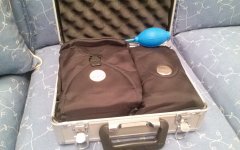HighNorth
Well-known member
Hi all!
I've been thinking of getting a Canon IS binocular for quite some time. The primary use will be astronomy, while secondary use will be general (terrestrial) observation and birding.
I have basically narrowed down my choice to ether the 10x42 IS L WP or the 15x50 IS WP.
I understand the 10x42 has superior optics, but that the 10x50 is no slouch in this department ether (it has field flattener and low dispersion glass). I suppose the 10x42 would be a better all-round binocular, but I find the extra magnification of the 15x50 tempting, especially for astro. I also hope the 15x50 could stand in for my birding scope when so desired (it would be lighter than my Vortex Razor HD 85mm, and dragging the tripod along has become such a hassle).
What do you think, and what would you choose? I'm in a bit of a bind here. :smoke: I also welcome other suggestions of course.
HN
I've been thinking of getting a Canon IS binocular for quite some time. The primary use will be astronomy, while secondary use will be general (terrestrial) observation and birding.
I have basically narrowed down my choice to ether the 10x42 IS L WP or the 15x50 IS WP.
I understand the 10x42 has superior optics, but that the 10x50 is no slouch in this department ether (it has field flattener and low dispersion glass). I suppose the 10x42 would be a better all-round binocular, but I find the extra magnification of the 15x50 tempting, especially for astro. I also hope the 15x50 could stand in for my birding scope when so desired (it would be lighter than my Vortex Razor HD 85mm, and dragging the tripod along has become such a hassle).
What do you think, and what would you choose? I'm in a bit of a bind here. :smoke: I also welcome other suggestions of course.
HN





